When I was asked to write this blog entry, the suggestion was made, “…like a desert island list.” Well, that’s just a perfect idea! Since most such lists include ten of something, such as favorite musicals or visual artworks, I’ll do the same here.
In this age of GPS and satellite communications, being marooned like Robinson Crusoe is fairly unlikely. Let’s say, instead, that my wife and I have decided to “self-isolate” on a desert island. One with a lot of coconuts, fresh water, catchable fish, and whatever passes for salad in such a place. After we get done building our home away from home out of bamboo and thatch, the next step will be to set up that Ham station, of course.
Although I can bring stuff with me, our baggage allowance will go only so far, leaving me to fend for myself to stay on the air. I will have my trusty toolbox in addition to a big box of wire, electronic components, and various other necessary supplies (like a generator) to get me through. I’ll also need some radio references to look up the answers to important questions like, “What is the right spacing for a 2 meter Yagi’s reflector and director?” and “What is the circuit for a filter I can use with PSK31?” A Ham can only remember so much!
When I’m not operating or walking around the island in my lavalava with Ellen, I’d like to relax with some good reading. Ham radio has so many good stories to tell, why not take along a few pounds of them to pass the time in the lagoon-side hammock?
What follows is my Desert Island Top Ten List. Some are technical references, packed full of the kind of useful information a Ham needs to stay active and in good shape, signal-wise. A partner to the nuts and bolts is a set of wonderful recountings of Ham radio history. Not simply nostalgia, these books are positively inspirational! You might not ever be in the position of having to promptly pick and pack, but these top-ten tomes will bring style and distinction to any shack—whether on the beach or in the basement. Enjoy!
Let’s start with real, physical printed books. With the complexity of Ham radio, no one knows it all! You’ll need a good set of references at hand…
ARRL Handbook
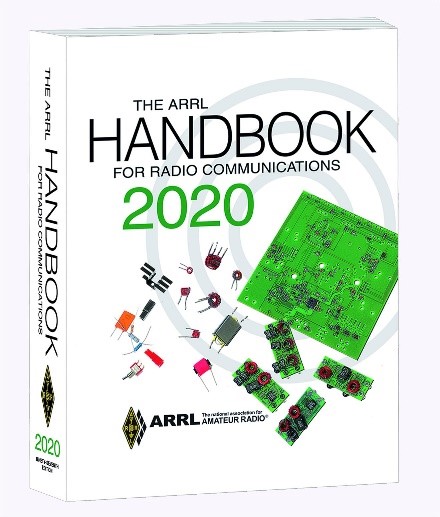
No Ham radio bookshelf is complete without the venerable ARRL Handbook for Radio Communications. Currently in its 97th edition, “the handbook” contains a wide selection of material that applies to almost any Ham radio technology. It’s organized in four sections: Fundamental Theory; Practical Design and Principles; Antenna Systems and Propagation; and Station Construction, Maintenance, and Management. There are numerous tables, equations, example calculations, and sets of reference data to support design, build, and repair needs.
The book’s online package of supplemental information—which you can download and store at home (or on a desert island)—includes dozens of projects and interesting magazine articles, expanding on the topics in the printed pages. There are design programs for many subjects and additional chapters on digital, image, and space communications.
ARRL Antenna Book
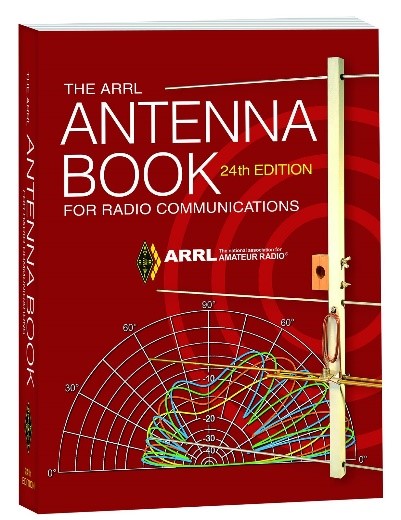
Companion to the Handbook, the ARRL Antenna Book is a handbook in its own right, dedicated to antennas from our newest LF and MF bands all the way through microwaves. It takes the propagation and transmission line material in the Handbook to entirely new levels, as well. Like the Handbook, the Antenna Book is organized in sections: Basic Antenna Topics; LF, MF, and HF Antennas; VHF, UHF, and Microwave Antennas; Special Applications; and Building and Maintaining Antenna Systems.
My favorite type of antennas to build and experiment with are the many “wire antenna” designs covered in the second section. On my desert island, I might finally have the room to build my own rhombic farm—and the palm trees to support it! Designs for tuning networks, baluns, phased arrays, parabolic dishes, and even hard-to-detect stealth antennas are included, too.
International Microwave Handbook
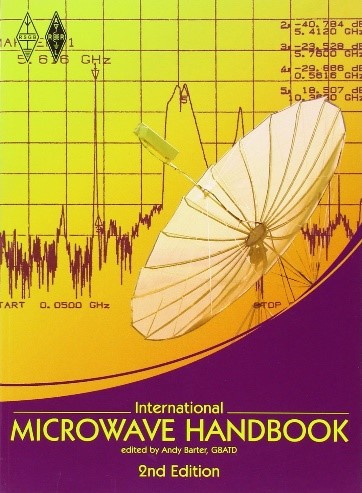
Published by the Radio Society of Great Britain (RSGB), this collection of everything-microwave covers operating techniques along with technical elements. This kind of radio know-how comes in very handy to a Ham on a desert island trying to stay in touch by “squirting a bird” on the VHF/UHF/microwave bands to access one of the new CubeSats as it orbits overhead.
If you’re mostly familiar with the traditional shortwave bands and the 6 meter “magic band,” this kind of all-in-one how-to reference will answer a lot of questions. From a circuitry perspective, this handbook picks up where the ARRL’s handbook leaves off, taking you well up into the GHz spectrum.
For some interesting perspective on today’s Ham radio, pick up an early version of one of these handbooks the next time you are at a Hamfest or browsing online. You will learn a lot about “state of the art” back then and will probably be surprised at the familiar items you encounter that have stood the test of time and are still part of Ham radio today. (Here’s a clue for finding some buried booty since we’re on a desert island—there are some drawings in today’s Antenna Book that were created for the very first edition in 1939. Can you dig them up?)
How about some web pages? Hey, aren’t I on a desert island? Well, sure, but I got sneaky and captured the web pages to read with a browser on my solar-powered laptop! Here are the three I’d definitely want to access:
RF Café
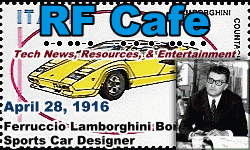
A veritable “Swiss army knife” (yes, I’ll pack one of those, too) of RF information, the site is resource-rich. Just about any topic you can name has its own explanation, tutorial, or calculator, and sometimes all three. There are links to vendors by component or service type going well beyond electronics to hardware and associated materials and supplies. (Maybe a drone could deliver packages to the island?)
For those of you not stuck on a desert island, you can check the job openings, and between band openings, the “Down Time” section is full of very enjoyable material, too. I’ll have plenty of time to play around in the puzzles section!
Microwaves 101

This destination is like RF Café, but, you know, for microwaves. While Ham radio grew out of the MF and HF spectrum, newer wireless systems treat anything under 1 GHz as “baseband data,” and that’s where RF engineers learn their craft. The way systems behave at these frequencies is familiar but different enough that Microwaves101 is a great partner to RF Café. I particularly like to sneak over to the Acronyms page and see if what I thought that TLA (three-letter acronym) meant is what it really means! The technical material here is organized like an encyclopedia and may be easier to search for some. If you happen to still be on the mainland, the technical forums can help you with good advice from all over.
Repeater Builders Technical Information Page

For dealing with all things repeater, including the newest modes, you’ll want to have this site bookmarked. I like the site not only for all the technical information but for its deep archives and supporting articles like the repeater equivalent of Robert’s Rules of Order. The website is provided by the Repeater Builders group, whose many members offer a wealth of useful information and advice, no matter what level of expertise you possess.
How about a little history? Ham radio has been around a long time—more than a century—and has been present at every stage of wireless development. Knowing where Ham radio came from is key to having a good idea of where it might be going.
History of QST, Volume 1: Amateur Radio Technology

Tooting my own horn a little bit, I was asked to compile this look back at our contributions to the technical aspects of Ham radio. It was tremendous fun to research back to the beginning and enlist the help of many experts, fountains of knowledge in their own right, to identify the key steps we made along the way. Hams have been supporting government and academic research along the way, too. Those CubeSats you hear about? Another Ham innovation. And deep inside your mobile phone are protocols developed for wireless data on the Ham bands! Every article I found is thought-provoking and reinforces my appreciation for just how valuable Ham radio is to the Ham and the public alike.
Yasme—The Danny Weil and Colvin Radio Expeditions
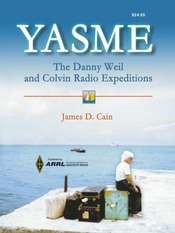
If you are a DXer—and who on a desert island is not a DXer—then you’re following in the footsteps of Danny Weil, VP2VB, and the Colvins, Lloyd, W6KG and Iris, W6QL. While there are many Hams still active who were in the thick of things back in the 1950s and 1960s, when DXing as we know it got started, most of us only heard the stories and not the signals themselves. The Yasme Foundation (yasme.org) sponsored Jim Cain, K1TN, a great writer and operator in his own right, to recount the tales associated with its founders. You’ll love the stories of rivalries, shipwrecks, pileups, adventures, and pirates!
200 Meters and Down
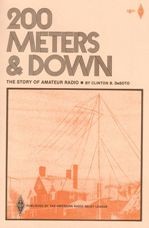
A great companion to the technology history book, Clinton DeSoto recounts how Ham radio evolved from raw experimentation to a worldwide, government-recognized service. Never licensed himself but closely associated with the ARRL, he captures the exuberance of Hams returning to the airwaves after World War 1, having nearly lost band access to the military. Then follow the excitement of discovering the short waves, vacuum tubes, and “continuous waves” known as CW! The backyard and basement tinkers became the amateur service, and DeSoto closes with a prescient look to the future, as well. Goosebumps! (Note—this book is out of print but widely available from used book vendors.)
The Gil Cartoon Book
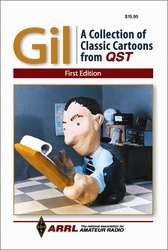
When the characters of text start to blur together, there’s no better graphic artist in the amateur pen-and-ink pantheon than Phil Gildersleeves, W1CJD, best known as “Gil” to Hams the world over. He manages, in a few strokes, to capture the serious, the sublime, and the silly that span the years. I guarantee you’ll find them educational, enjoyable, and more than a few to be laugh-out-loud funny! No history of Ham radio can be told entirely in text, and this selection of “Gil cartoons” is the perfect book to top off the treasure chest.
Did I get all of my favorites in there? Almost! I had to leave a few behind. In the Honorable Mention list are many you might also consider:
ON4UN’s Low Band DXing—A tour-de-force at 40 meters and the longer-wavelength bands. John covers antennas, accessories, and operating to fill your logbooks in the nighttime hours.
DJ9ZB’s DX World Guide—A book examining all the different DXCC entities, facts about them, their Ham radio facets, and plenty of color QSLs. Currently out of print but worth looking for! If you enjoy the story of a year-long challenge, pick up W9KNI’s The Complete DXer, a how-to guide for the DXer (who might just be stuck on a desert island with a radio).
Physics Problem Solver—What can I say, I’m a physics geek! While on your island, you’ll have to make do and why not figure it out first? If your problem is not in this book, you just found a great thesis topic!
Regardless of which you choose, I hope these selections find their way onto your bookshelf and enrich your Ham radio experience, as they have mine, for years to come!

